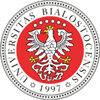Proszę używać tego identyfikatora do cytowań lub wstaw link do tej pozycji:
http://hdl.handle.net/11320/19011| Tytuł: | Using Network Analysis and Econometric Modelling to Map the Stock Market During Crises: The Case of the German Dax Index |
| Autorzy: | Tomeczek, Artur F. Napiórkowski, Tomasz M. Milewicz, Waldemar |
| Słowa kluczowe: | correlation network minimum spanning tree financial market economic crisis DAX |
| Data wydania: | 2025 |
| Data dodania: | 10-paź-2025 |
| Wydawca: | Wydawnictwo Uniwersytetu w Białymstoku |
| Źródło: | Optimum. Economic Studies, Nr 3(121) 2025, s. 72-95 |
| Abstrakt: | Purpose | The aim of this paper is to test a hypothesis stating that it is possible to use past crises as indicators of the key stock market movers for future crises by applying a two-step identification procedure based on network and econometric analysis. DAX has been selected since it is attached to the biggest European economy and Covid-19 as it is the most recent crisis to end. Research method | A two-step analysis is proposed based on a combination of the minimum spanning tree (MST) methodology and econometric modelling. After identi fying focal firms for the DAX index during DOTCOM, GLOBAL, and EUROZONE events, we have used these firms as explanatory variables for the value of the studied index during the Covid-19 crisis. Results | Our results show that only one focal firm was not considered as a statistically significant explanatory variable for the DAX Kursindex. This indicates that the applied procedure allowed to explain over 90% of dynamics in the DAX Kursindex during the recent pandemic crisis. Originality / value / implications / recommendations | We demonstrate that focal firms of past crises can be used in the analysis of future crises. Stock markets reflect investor’s sentiments towards individual firms and the economy in which these firms operate. Despite the fact that a part of prices and index values comes from fundamental analy sis, there is a part of valuation that is derived from the subjective interpretation of data and individual belief. Focal firms become the biggest movers of the market in the time of a crisis. |
| Afiliacja: | Artur F. Tomeczek - SGH Warsaw School of Economics Tomasz M. Napiórkowski - SGH Warsaw School of Economics Waldemar Milewicz - SGH Warsaw School of Economics |
| E-mail: | Artur F. Tomeczek: artur.tomeczek@sgh.waw.pl Tomasz M. Napiórkowski: tnapio@sgh.waw.pl Waldemar Milewicz: wmilew@sgh.waw.pl |
| Sponsorzy: | This article was financed from funds received as part of statutory research conducted at the Warsaw School of Economics, Global Economic Interdependence Department. |
| URI: | http://hdl.handle.net/11320/19011 |
| DOI: | 10.15290/oes.2025.03.121.04 |
| ISSN: | 1506-7637 |
| metadata.dc.identifier.orcid: | 0000-0003-4888-2535 0000-0001-6028-0567 0000-0002-8652-6307 |
| Typ Dokumentu: | Article |
| Właściciel praw: | © Copyright by Uniwersytet w Białymstoku |
| Występuje w kolekcji(ach): | Optimum. Economic Studies, 2025, nr 3(121) |
Pliki w tej pozycji:
| Plik | Opis | Rozmiar | Format | |
|---|---|---|---|---|
| Optimum_3_2025_A_F_Tomeczek_T_M_Napiorkowski_W_Milewicz_Using_network_analysis.pdf | 721,51 kB | Adobe PDF | Otwórz |
Pozycja jest chroniona prawem autorskim (Copyright © Wszelkie prawa zastrzeżone)

